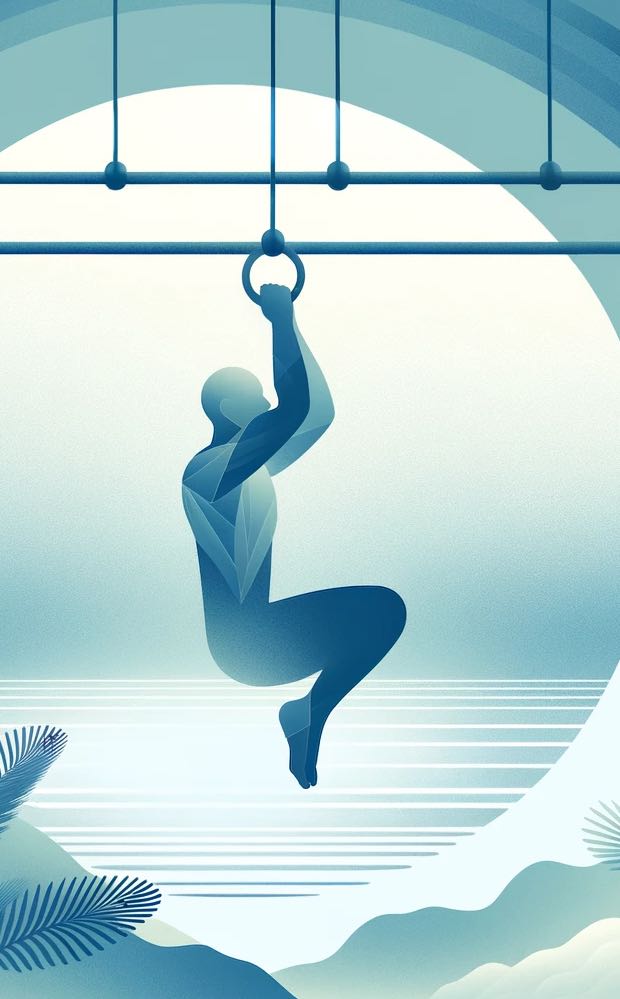
In this insightful blog post, we delve into the therapeutic benefits of hanging, as discussed in the Strength Side’s YouTube video “How Hanging Heals the Body.” The video, hosted by Josh and Trevor, explores how this simple activity can significantly impact our body’s mobility, spine health, shoulder mechanics, and overall posture.
Understanding the Benefits of Hanging
Hanging, a fundamental movement, plays a crucial role in reshaping posture, healing shoulders, and even potentially increasing height. Dr. John M. Kirsch highlights that 90% of his patients recommended for shoulder surgery avoided it through regular hanging exercises. The benefits include:
- Decompressing the spine, creating space in compressed areas.
- Opening up muscles around the shoulder, improving mobility.
- Increasing grip strength, which is linked to longevity.
- Strengthening shoulders and core, enhancing overall strength and athleticism.
Key Points for Effective Hanging
- Keep shoulders relaxed and up towards the ears.
- Maintain slight tension in the core with ribs pulled down.
- Ensure steady breathing and steady grip.
- Progress slowly to avoid injury and ensure effectiveness.
Building Up to One-Arm Hanging
The video emphasizes the evolution of our shoulders for brachiating (swinging from branch to branch), making hanging and climbing natural movements for us. Progressing from two-arm to one-arm hanging is crucial for replicating these ancestral movements. The one-arm hang not only challenges the body more but also replicates the dynamic movement of brachiating.
Personal Journey and Program Suggestions
Trevor shares his personal journey of overcoming shoulder dislocations through hanging and non-traditional rehab methods. For those looking to start their hanging journey, the video suggests a basic one-arm hanging program, which can be adjusted according to individual levels.
Conclusion:
Hanging is a simple yet powerful tool for improving physical health, particularly for those with a modern lifestyle that involves a lot of sitting or physical strain. It’s not just a workout routine; it’s a return to our natural movement patterns that can lead to significant health benefits.
To watch the full video and get more detailed insights and exercises, check out Strength Side’s video here.
This post provides a comprehensive overview of the benefits of hanging, drawing from the Strength Side’s video, and offers practical advice on incorporating this exercise into your routine.
FAQs
- What are the benefits of hanging exercises? Hanging can decompress the spine, open up shoulder muscles, increase grip strength, and improve overall strength and athleticism.
- How does hanging reshape posture? By using gravity, hanging pulls the hips away from the shoulders, creating space and alleviating compression caused by modern lifestyles.
- Can hanging heal shoulder issues? Yes, many individuals have found relief from shoulder pain and avoided surgery through consistent hanging exercises.
- Is hanging beneficial for spine health? Absolutely. Hanging helps in decompressing the spine, which is beneficial for overall spine health.
- How long should I hang for maximum benefit? Start with what’s comfortable, gradually building up to 60 seconds or more.
- Can beginners do hanging exercises? Yes, beginners can start with assisted hangs, gradually progressing as strength increases.
- What’s the difference between passive and active hanging? Passive hanging involves relaxed shoulders, letting gravity do the work, while active hanging involves pulling the shoulders down actively.
- Should I only hang from two arms? Starting with two arms is recommended, but progressing to one-arm hangs can offer greater benefits and mimic natural movements.
- How often should I practice hanging exercises? Daily hanging for a few minutes can be beneficial, but ensure not to overdo it and maintain a light, comfortable routine.
- What if I experience pain during hanging? Discontinue if you feel pain and consult a medical professional. Hanging should feel like a stretch, not painful.
Blog Tags for the Post: Hanging Exercises, Posture Improvement, Shoulder Health, Spine Decompression, Grip Strength, Fitness Techniques, Mobility Enhancement, Rehabilitation, Natural Movement, Core Strengthening









